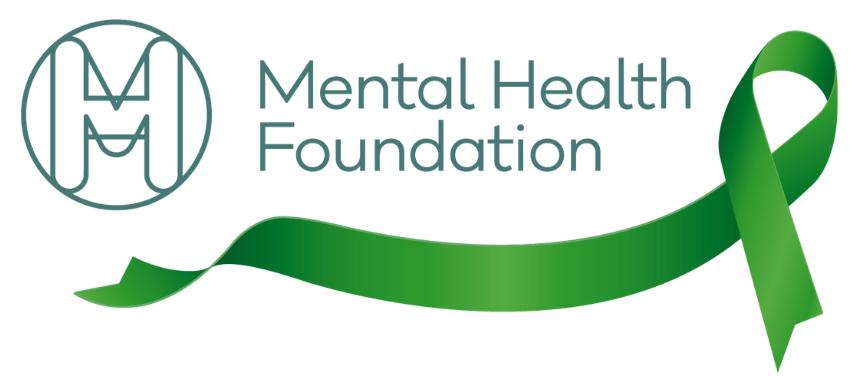


Written by Maisie Waylett, Class Teacher
A recent survey published by Natural England of young people found that nearly 8 in 10 eight to fifteen year-olds (78%) agreed that looking after the environment was important to them, and more than 8 in 10 (81%) said they wanted to do more to look after the environment (Natural England Survey). As teacher myself who cares deeply about the planet that we are leaving our students with, environmental celebrations throughout the year are an opportunity for big conversations!
Luckily, we have these opportunities dotted throughout the academic year with World Environment Day (5th of June), Earth Day (22nd of April), World Wildlife Day (3rd of March), World Water Day (22nd of March), and International Day of Forests (21st of March).

Whilst in Spring, these days are like a flood, the Autumn term is a bit dry! However, every year, Recycling Week gives teachers a fantastic opportunity to begin the year with an earth conscious focus! The UK Recycle Week 2025 will run from 22 to 28 September, so save the date in your diaries!
While facts and statistics about climate change and pollution are important, for primary-aged children, stories are one of the most effective ways to spark interest, build empathy, and drive action. One book that beautifully connects children with the idea of caring for our planet is The Girl Who Planted Trees by Caryl Hart and beautifully illustrated by Anastasia Suvorova. This lyrical and evocative picture book is a springboard for conversations about collective action, environmental stewardship and resilience.
Young children learn best through narratives. Stories allow them to step into another’s shoes, imagine new possibilities, and understand complex ideas in an age-appropriate way. When it comes to the environment—a topic that can sometimes feel overwhelming—books like The Girl Who Planted Trees gently introduce core values like care, responsibility, and perseverance. Using a book such as this is a great way to teach children about looking after the planet.
Rather than focusing on what’s going wrong, this book shows what can go right when one child chooses to take action. It empowers young readers to believe they can make a difference -and to keep trying when things go wrong- no matter how small their start may seem.

To celebrate Recycling Week, here are several ways teachers can use The Girl Who Planted Trees in Key Stage 2 to educate and inspire:
Begin with a read-aloud session. Allow time for children to absorb the story and illustrations. Children could be encouraged to reflect with the following questions:
The trees on the mountain had been cut down. Why do you think this might have happened?
Why were the trees so important to the mountain?
How do you think Grandad felt about what happened to the trees? How do you know this?
How did Calla show resilience throughout the story?
How can we help to care for our local environment like Calla?
Encourage each child to make a “tree planting” pledge—not necessarily to plant a tree, but to take one action that helps the environment. For World Recycling Day, their pledge might be:
Bringing a reusable water bottle to school
Recycling properly at home
Reusing materials in a creative way (e.g., craft projects)
Picking up litter during a school walk
Create a classroom display of their pledges using leaf or tree shapes to symbolize each act of care

Connect the story to real-life figures like Wangari Maathai, who led massive tree-planting efforts in Kenya, Greta Thunberg who led the School Strikes for Climate in Sweden, or local recycling heroes in your community. ‘Earth Heroes’ is a great book to use for this!
After discussing the importance of recycling, give students time to create their own stories or drawings about helping the Earth. You can use recycled materials (scrap paper, cardboard, bottle caps) to create puppets inspired by the story. Children can then retell the story using their “recycled puppets” to promote environmental change.
Have students work in small groups to create short comic strips that show a character -like Calla- making a difference through recycling or reusing.
Recycling Week is the perfect time to start or highlight a collection of environmentally themed books. Add The Girl Who Planted Trees along with other eco-inspired reads like:

Michael Recycle by Ellie Bethel tells the adventures of a young superhero whose power allows him to teach people about recycling
Somebody Swallowed Stanley by Sarah Roberts shares a powerful message about plastic pollution from
Harlem Grown by Tony Hillery tells the true story of a lush garden in New York City that grew out of an abandoned lot and now feeds a whole neighbourhood!
The Lorax by Dr. Seuss is an old but gold haunting fable about the dangers of destroying our forests and woodlands.
When Calla’s grandad shows her a picture of what the great, grey mountain above her village used to look like, she is inspired to plant a new forest and can’t wait for the animals to return.
After some time, a little patch of green appears on the mountain and gives the whole village hope. Then, one day, a ferocious storm comes up the valley, destroying every single one of the girl’s saplings. Has all her hard work been for nothing? Or has it inspired those around her to share her dream? In this inspiring and hopeful picture book, one girl’s imagination, determination and positivity motivates a whole community to work together to create something amazing that will benefit everyone.
This poetic tale, brought to life with Suvorova’s enchanting illustrations, mirrors real-world stories of reforestation efforts and grassroots environmental activism. It gently shows children the harms of deforestation as well as long-term benefits of caring for the Earth. Most of all, this story highlights how one person’s commitment can inspire collective change.
Recycling can be explained to KS2 children as the process of turning old or used materials—like paper, plastic, and metal—into something new, instead of throwing them away. Use real-life examples they understand, such as recycling cereal boxes into new cardboard or plastic bottles into clothing. A simple phrase like “Reduce, Reuse, Recycle” helps children remember key actions they can take.
Global Recycling Week is a fantastic opportunity to link children’s rights and responsibilities within their local and global community to the PSHE curriculum.
Rights and responsibilities: Teach children about their role in looking after the environment and making sustainable choices to make a positive difference to their community.
Community involvement: Encourage projects that promote recycling in school and at home.
The 3 Rs of recycling refer to the term ‘Reduce, Reuse, Recycle’. This easy to remember phrase is perfect to support children’s understanding of recycling. An easy way to explain the 3 Rs to children is:
Reduce means to thinking about how many things we have and trying to be mindful about buying more. Some people ask themselves, ‘do I really need this?’ before buying it.
Reuse means using something again and again instead of replacing it, for example a reusable ‘bag for life’. This could also include fixing broken toys or clothing instead of buying new.
Recycle means taking something old, such as waste paper or glass, and turning it into something new so that it can be used again.


We’re grateful to the following organisations for their funding and support. With their help, we are building a community to inspire lifelong wellbeing.





We’re proud of what others have to say about us. Take a look at some of the media coverage we’ve attracted.






We believe in a future where all children have the tools, skills and knowledge they need to practise life-long wellbeing, making healthier choices for themselves and others.

